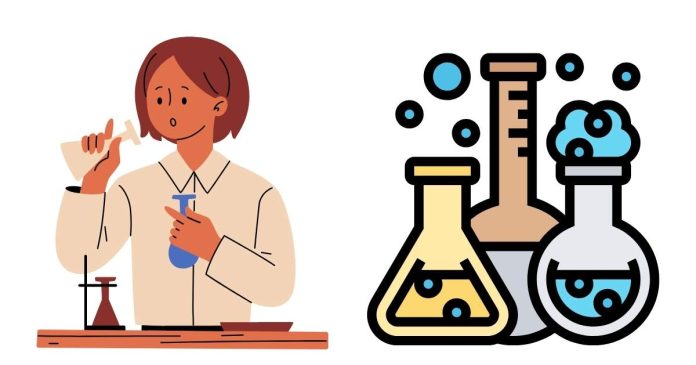In chemistry, understanding reactions between acids and carbonates is fundamental, as they often lead to the formation of salts, gases, and sometimes water. One such reaction occurs between nitric acid (HNO₃) and barium carbonate (BaCO₃). This reaction is a classic example of an acid-carbonate reaction and leads to the formation of a salt, water, and carbon dioxide gas.
The Chemical Equation
The balanced chemical equation for the reaction between nitric acid and barium carbonate is:
BaCO₃ (s) + 2 HNO₃ (aq) → Ba(NO₃)₂ (aq) + CO₂ (g) + H₂O (l)
Let’s break down the equation:
- BaCO₃ (s) – This is solid barium carbonate, a white powder that reacts with acids.
- HNO₃ (aq) – This is aqueous nitric acid, a strong acid commonly used in laboratory settings.
- Ba(NO₃)₂ (aq) – This is barium nitrate, a soluble salt formed from the reaction.
- CO₂ (g) – Carbon dioxide gas, which is released during the reaction. It’s one of the typical products of reactions between carbonates and acids.
- H₂O (l) – Water, which is formed as part of the reaction between the acid and carbonate.
The Reaction Process
When barium carbonate reacts with nitric acid, the carbonate ion (CO₃²⁻) reacts with hydrogen ions (H⁺) from the nitric acid. This produces carbonic acid (H₂CO₃), which is unstable and decomposes immediately into carbon dioxide (CO₂) and water (H₂O). The remaining barium ions (Ba²⁺) combine with nitrate ions (NO₃⁻) to form barium nitrate (Ba(NO₃)₂), which is a soluble salt.
Here’s a more detailed breakdown:
- Barium carbonate reacts with nitric acid:BaCO3(s)+2HNO3(aq)→Ba2+(aq)+2NO3−(aq)+CO32−(aq)+2H+(aq)
- The carbonate ions (CO₃²⁻) react with hydrogen ions (H⁺) to form carbonic acid (H₂CO₃), which decomposes into carbon dioxide and water:CO3/2(aq)+2H(aq)→H2CO3(aq)→CO2(g)+H2O(l)
- Barium ions (Ba²⁺) and nitrate ions (NO₃⁻) combine to form barium nitrate (Ba(NO₃)₂): Ba²⁺ (aq) + 2 NO₃⁻ (aq) → Ba(NO₃)₂ (aq)
Why Does This Reaction Occur?
This reaction is an example of an acid-carbonate reaction, where the acid reacts with the carbonate to produce a salt, water, and carbon dioxide gas. The reason this reaction occurs is that nitric acid (a strong acid) readily donates hydrogen ions (H⁺), which react with the carbonate ions (CO₃²⁻) from barium carbonate. The formation of the gaseous carbon dioxide (CO₂) and water makes the reaction spontaneous and energetically favorable.
Applications of the Reaction
The reaction between nitric acid and barium carbonate is primarily of interest in educational settings or in laboratories where acids and carbonates are being studied. However, reactions like these are also useful in various industrial processes. For example:
- The production of barium nitrate from barium carbonate is significant in the manufacturing of fireworks and other pyrotechnic devices.
- The carbon dioxide released in this reaction can be captured for use in carbonated beverages or in laboratory settings.
Conclusion
The reaction between nitric acid and barium carbonate is a classic example of an acid-carbonate reaction that leads to the formation of a salt (barium nitrate), water, and carbon dioxide gas. This reaction is a useful illustration of how acids interact with carbonates to produce a range of products, and understanding it can help deepen your knowledge of chemical reactions in general. Whether in the classroom or industry, this reaction serves as a key example of acid-base chemistry in action.


